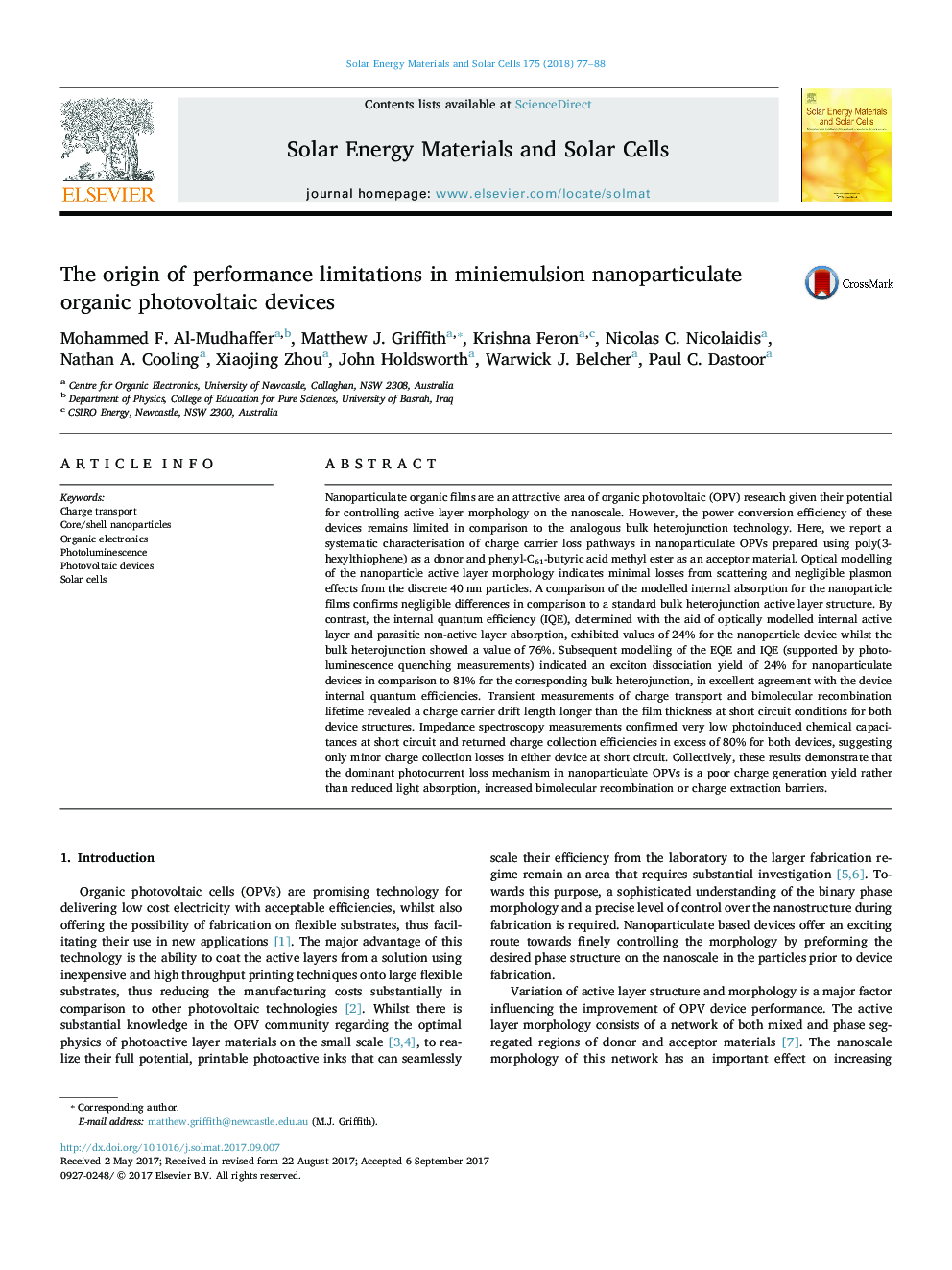| Article ID | Journal | Published Year | Pages | File Type |
|---|---|---|---|---|
| 6534504 | Solar Energy Materials and Solar Cells | 2018 | 12 Pages |
Abstract
Nanoparticulate organic films are an attractive area of organic photovoltaic (OPV) research given their potential for controlling active layer morphology on the nanoscale. However, the power conversion efficiency of these devices remains limited in comparison to the analogous bulk heterojunction technology. Here, we report a systematic characterisation of charge carrier loss pathways in nanoparticulate OPVs prepared using poly(3-hexylthiophene) as a donor and phenyl-C61-butyric acid methyl ester as an acceptor material. Optical modelling of the nanoparticle active layer morphology indicates minimal losses from scattering and negligible plasmon effects from the discrete 40Â nm particles. A comparison of the modelled internal absorption for the nanoparticle films confirms negligible differences in comparison to a standard bulk heterojunction active layer structure. By contrast, the internal quantum efficiency (IQE), determined with the aid of optically modelled internal active layer and parasitic non-active layer absorption, exhibited values of 24% for the nanoparticle device whilst the bulk heterojunction showed a value of 76%. Subsequent modelling of the EQE and IQE (supported by photoluminescence quenching measurements) indicated an exciton dissociation yield of 24% for nanoparticulate devices in comparison to 81% for the corresponding bulk heterojunction, in excellent agreement with the device internal quantum efficiencies. Transient measurements of charge transport and bimolecular recombination lifetime revealed a charge carrier drift length longer than the film thickness at short circuit conditions for both device structures. Impedance spectroscopy measurements confirmed very low photoinduced chemical capacitances at short circuit and returned charge collection efficiencies in excess of 80% for both devices, suggesting only minor charge collection losses in either device at short circuit. Collectively, these results demonstrate that the dominant photocurrent loss mechanism in nanoparticulate OPVs is a poor charge generation yield rather than reduced light absorption, increased bimolecular recombination or charge extraction barriers.
Keywords
Related Topics
Physical Sciences and Engineering
Chemical Engineering
Catalysis
Authors
Mohammed F. Al-Mudhaffer, Matthew J. Griffith, Krishna Feron, Nicolas C. Nicolaidis, Nathan A. Cooling, Xiaojing Zhou, John Holdsworth, Warwick J. Belcher, Paul C. Dastoor,
